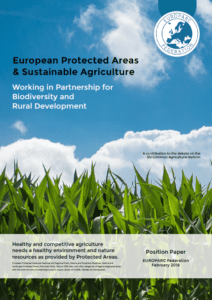Webinar Nature and Agriculture: understanding EU policy & delivering good practice
Farmers and foresters comprise almost 80% of the total EU land area. Simultaneously, the majority of European Protected Areas consist of cultural managed landscapes. EUROPARC, therefore, believes that the role of Protected Areas and Natura 2000 Sites in rural development needs to be valorised and the interdependence on the ground fully reflected in a more integrated Common Agricultural Policy (CAP). What are the challenges ahead? Which new instruments will be created and what are the main differences with the current CAP?
- 26th February 2019 at 10:30 CET
- free participation but registrations are mandatory. Register here
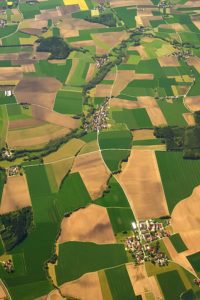
Crops in Bayern, Germany © Joao Romba (rombaimages.pt)
The #FutureofCAP
The ongoing debate in Brussels on the Future of CAP involves all European Institutions, NGOs, MEPs and several civic organisations. The EU Commission proposals for the new CAP, which take into consideration the environment, nature conservation, and sustainable use of natural resources, are now being analysed by the European Parliament and the European Council.
To understand the links between nature and agriculture that the CAP proposals entail, we invited representatives of the DG Environment and DG Agriculture to share their perspectives and tell us all about the new “green architecture” and how the “nature directives” will be represented in the future CAP.
From policy to implementation
According to the European Commission, “agriculture depends more on the weather and the climate than many other sectors“, and the responsible use of natural resources is as pertinent as ever. But policy is insufficient without the enforcement in each EU member states.
“While being cost-effective, farmers should work in a sustainable and environmentally friendly manner, and maintain our soils and biodiversity”. In this webinar, after having heard the different EU perspectives and policy changes of the coming CAP, we will hear how the Government of Latvia is implementing a successful cross-sectoral cooperation programme between the Nature and Agriculture ministries.
EUROPARC believes that the new CAP should pay specific attention to farmers acting within or close to Protected Areas and Natura 2000 Sites, engaged in environment-friendly agriculture and working in partnership with Protected Areas authorities. The position paper “European Protected Areas & Sustainable Agriculture: Working in Partnership for Biodiversity and Rural Development” launched last year introduces the role of Protected Areas, and reinforces the need for new, better-integrated approaches and more innovative funding mechanisms at regional, national and European level.
Webinar Presentations
1) The DG AGRI perspective: The rural development and the green architecture of the future CAP
by Krzystof Sulima, Policy Officer, Directorate-General for Agriculture and Rural Development, EU Commission
Links between nature conservation, forestry and farming are very strong and this is reflected in the new CAP architecture. The presentation will show the new green structure of the CAP as proposed by the European Commission and currently under examination by the European Parliament and European Council, and the challenges and the differences with the current CAP. Mr Sulima will highlight the new measures and instruments that will be available for farmers and stakeholders to support nature conservation, develop sustainable agriculture and promote rural development, with specific attention to Natura 2000 and natural protected areas.
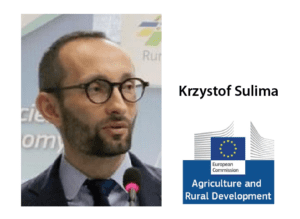 Mr. Sulima has been working in DG AGRI for many years and follows, in particular, the agri-environmental schemes and environmental measures in the Common Agriculture Policy. He is working on the CAP reform with special attention to rural development.
Mr. Sulima has been working in DG AGRI for many years and follows, in particular, the agri-environmental schemes and environmental measures in the Common Agriculture Policy. He is working on the CAP reform with special attention to rural development.
2) The DG ENVI perspective: The Birds and Habitats Directives and Nature Action Plan and the future CAP
by Jérémie Crespin, Policy Officer, Directorate-General for Environment, EU Commission
The terrestrial Natura 2000 network is today largely complete; however, most habitats and species associated with agricultural ecosystems in Europe are still in an unfavorable conservation status. The fitness check of the Nature Directives concluded that greater efforts are needed to conserve and enhance biodiversity, through more effective integration with the CAP in order to reach biodiversity objectives.. The “Nature Action Plan for nature, people and the economy” addresses this conclusion and because of the important role of agriculture, specific actions are dedicated to the CAP. The presentation will present the connection between the nature’s directives implementation, including in Natura 2000 area and other protected areas, and the future CAP.
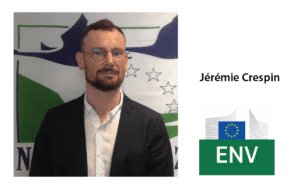 Mr. Crespin has a long experience in DG ENV and a background in Forest Science, Forest and Forest Resource Management and Agronomy and Food Industries. He is following the CAP reform with special attention to its relation with EU laws and policies on Biodiversity protection.
Mr. Crespin has a long experience in DG ENV and a background in Forest Science, Forest and Forest Resource Management and Agronomy and Food Industries. He is following the CAP reform with special attention to its relation with EU laws and policies on Biodiversity protection.
3) The implementation perspective: Nature conservation governance in Latvia: achievements and challenges ahead
by Juris Jātnieks, Director General, Nature Conservation Agency in Latvia
The “National Conservation and Management Program for Natura 2000 sites in Latvia 2018 – 2030” identified a list of 19 priority management measures for all terrestrial NATURA 2000 area of Latvia. The “NATPROGRAMM” is the detailed follow-up of the National PAF 2012, setting the location, the scale, and priority of habitat management measures to be implemented. This program produced 6 handbooks of protected habitat management guidelines for coastal habitats, freshwater habitats, grasslands, wetlands and forests, rocky habitats and caves. In Europe, it is an excellent example of cooperation between nature and agriculture ministries, as the Guidelines for management of grassland habitats were accepted by the Ministry of Agriculture as the official handbook for all farmers and land managers in country, to receive support payments according to the Rural Development Program of Latvia – a big success of cross-sectoral synergies.
The Guidelines describe field methods suggesting how to manage the existing habitat to improve status, or restore the habitat whenever it is possible and necessary; identify user-friendly indicators included to evaluate the state of habitats for land users, managers, municipality planners and decisionmakers; draw conclusions from experiments of management methods for dunes, grasslands, freshwater, mire and forest habitats. The implementation was based done with a broad public involvement which included workshops, seminars, discussions, voluntary work and training of municipality staff to implement management measures.
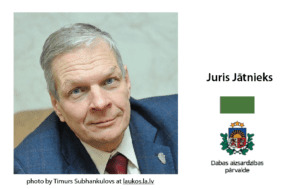 Mr. Jātnieks is the General Director of the Nature Conservation Agency, the institution that ensures implementation of unified nature conservation policy in Latvia ensuring good governance and efficient management of the protected nature areas of the country. His background is on Ecology of ecosystems and has worked in the NCA as project manager before becoming the General Director.
Mr. Jātnieks is the General Director of the Nature Conservation Agency, the institution that ensures implementation of unified nature conservation policy in Latvia ensuring good governance and efficient management of the protected nature areas of the country. His background is on Ecology of ecosystems and has worked in the NCA as project manager before becoming the General Director.
How to join?
Webinars are open not only to EUROPARC members – but to everyone with an interest in Protected Areas. Participation is free but registration is necessary. Register here.
You can join in from anywhere: you will just need a device with internet connection. EUROPARC webinars are held in English and participants have the chance to join the discussion with the invited speakers, at the final part of the webinar. NOTE: Please make sure you have the latest JAVA version, you can run a check to the webinar by following this link: https://gr3eq.wb.getresponse.com/room/connection-tester
